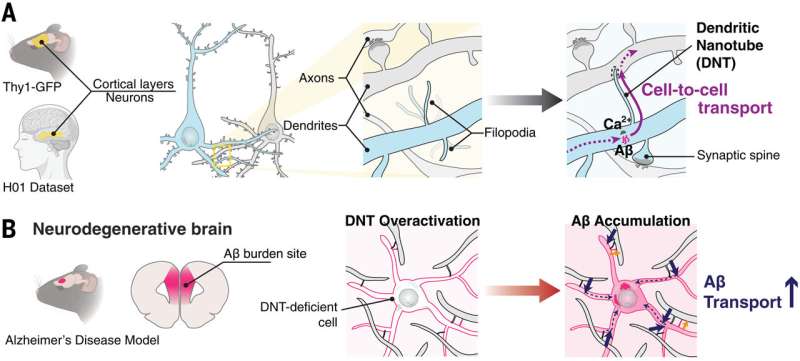Now, a group of scientists have identified a new type of nanotube that appears to be acting as a kind of bridge, transporting materials between dendrites—the branched projections on neurons. The study, published in Science, describes what the group calls “dendritic nanotubes” or DNTs and their possible relationship to the accumulation of the peptide amyloid-beta (Aβ), which is seen with Alzheimer’s disease.
The DNTs were first identified in mouse and human brain tissue using superresolution microscopy (dSRRF) and electron microscopy. The actin-rich DNTs were seen connecting the dendrites in mouse and human cortex. To distinguish DNTs from other dendritic structures, the team used specialized imaging and machine learning-based analysis.

